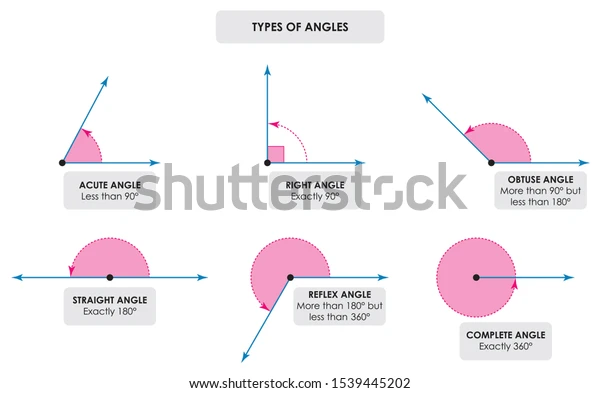How Many Obtuse Angles Can A Triangle Have?
Ans: A triangle can have only 0 or 1 obtuse angle.
In geometry, an angle is a shape created by two rays that meet at a point known as a vertex. The angles' two sides are represented by the two rays. The Latin word "Angulus," which means "corner," is the source of the English term "angle." When two curves in this plane connect, angles are created.
Obtuse Angle
A bigger than 90° but less than 180° angle is referred to as an "obtuse angle." In other words, a right angle or a straight angle are opposites of an obtuse angle.

The smaller angle (but more than 90°) in the illustration is known as the obtuse angle, and the bigger angle that results is known as the reflex angle (but more than 180°, less than 360°). As a result, the obtuse angle has a degree that is greater than 90° but less than 180°.
Obtuse Angle Of A Triangle

When one of a triangle's angles is greater than 90°, the triangle has an obtuse angle. As we know the sum of all angles of a triangle is 1800. And, we know that an obtuse angle lies between 900 and 1800. This means that if we add two obtuse angles, then their sum will be more than 1800. Hence, a triangle can have a maximum of one obtuse angle only.
An isosceles or scalene triangle can be an obtuse triangle. No equilateral triangle can have an obtuse angle. Similar to this, a triangle cannot have both a right angle and an acute angle. The triangle's longest side is the side opposite to the largest angle. The other two angles of a triangle must be acute if one of the triangle's angles is obtuse.
Conclusion
So, as per the angle sum property of the triangle, a triangle can have only 1 or 0 number of obtuse angles.
Applications for Admissions are open.
This ebook serves as a valuable study guide for NEET 2025 exam.
NEET Previous 10 Year Questions
Get nowThis e-book offers NEET PYQ and serves as an indispensable NEET study material.
JEE Main Important Physics formulas
Get nowAs per latest syllabus. Physics formulas, equations, & laws of class 11 & 12th chapters
JEE Main Important Chemistry formulas
Get nowAs per latest syllabus. Chemistry formulas, equations, & laws of class 11 & 12th chapters
JEE Main high scoring chapters and topics
Get nowAs per latest 2024 syllabus. Study 40% syllabus and score upto 100% marks in JEE
JEE Main Important Mathematics Formulas
Get nowAs per latest syllabus. Maths formulas, equations, & theorems of class 11 & 12th chapters